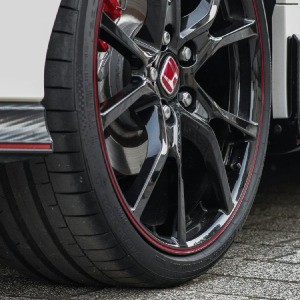Your car’s tires are paramount for ensuring every drive is safe and enjoyable. A smooth ride can be quickly disrupted by the unsettling feeling of a wobble, often signaling a micro puncture in your tubeless tire. But don’t worry! This comprehensive guide will introduce you to an innovative and convenient solution: repairing these minor punctures using aerosol tire sealant. Say goodbye to roadside stress as we walk you through a straightforward, step-by-step DIY method to get you back on the road swiftly.
Understanding Micro Punctures in Car Tyres
Micro punctures are insidious culprits behind slow tire leaks. Often unnoticeable at first, they gradually deflate your tires, compromising performance and safety over time. Unlike larger, more obvious punctures, these tiny breaches can be difficult to detect and can lead to significant issues if ignored. Aerosol tire repair emerges as a highly effective solution, offering a rapid and dependable fix for these minor tire troubles.
The Benefits of Using Aerosol Tire Sealant for Repairs
Aerosol tire repair kits have become increasingly popular due to their ease of use and effectiveness in addressing tubeless tire problems. These kits typically contain a sealant within an aerosol can, making them incredibly convenient for quick, on-the-spot repairs. The sealant is designed not only to plug the micro puncture but also to quickly restore and maintain tire pressure. This provides a temporary yet reliable fix, buying you valuable time until you can reach a tire service professional for a more permanent repair.
Step-by-Step Guide: Repairing Micro Punctures with Aerosol Sealant
This section provides a detailed walkthrough of how to use an aerosol tire repair kit effectively.
1. Assess the Tyre Damage and Locate the Puncture
Begin by carefully examining the affected tire to identify the area of the micro puncture. Clean the tire surface around the suspected puncture site to remove any dirt, dust, or debris. This ensures that the sealant can properly adhere and that you can clearly inspect the tire for the tiny puncture. Look closely for small objects embedded in the tire or listen for a hissing sound indicating air leakage.
2. Position the Tyre Valve at the Top for Sealant Application
To maximize the effectiveness of the aerosol sealant, rotate the tire so that the valve stem is at the highest point. This positioning allows gravity to assist the sealant in flowing down and thoroughly coating the inner surface of the tire, directly targeting the puncture for optimal sealing.
3. Attach the Aerosol Can to the Tyre Valve
Most aerosol tire repair kits are designed for user-friendly application and come with a nozzle or applicator that easily attaches to your tire’s valve stem. Firmly connect the aerosol can’s nozzle to the valve, ensuring a secure and airtight seal. This prevents any sealant from leaking out during the injection process and ensures efficient delivery into the tire.
4. Inject the Sealant into the Tubeless Tyre
Once the can is securely attached, depress the nozzle to begin injecting the sealant into the tire. Hold the aerosol can upright during application to ensure proper sealant flow. Carefully follow the dosage instructions provided with your specific repair kit, as the amount of sealant needed can vary based on tire size. The sealant will flow directly into the micro puncture, initiating the sealing process from the inside.
5. Rotate the Tyre to Distribute Sealant Evenly
After injecting the recommended amount of sealant, rotate the tire completely several times. This crucial step ensures that the sealant is evenly distributed throughout the inner tire cavity. Proper distribution is vital for the sealant to effectively reach and cover the entire inner surface, maximizing its puncture-sealing capabilities and ensuring a comprehensive temporary repair.
6. Inflate the Tyre to the Correct Pressure
Using a portable car tire inflator or an air pump at a nearby gas station, inflate the tire back to the vehicle manufacturer’s recommended pressure. You can find the recommended pressure on the sticker typically located on your driver’s side doorjamb or in your owner’s manual. Correct inflation is essential as it helps the sealant to spread uniformly and effectively seal the micro puncture.
7. Check for Air Leaks Post-Repair
After inflating the tire, conduct a leak test to confirm the micro puncture has been successfully sealed. Prepare a solution of soapy water and spray it generously over the repaired area, particularly around the puncture site and valve stem. Observe closely for the formation of bubbles. If bubbles appear, it indicates a persistent leak, and you may need to repeat the sealant application process or seek professional tire repair services.
Essential Tips and Tricks for Successful Tyre Repair
To ensure a smooth and effective repair, consider these helpful tips:
- Act Promptly: Address micro punctures as soon as you notice them. Early intervention can prevent further tire damage and potential safety hazards.
- Verify Compatibility: Always check that the aerosol tire repair kit is compatible with your specific tire type and size. Refer to the kit’s instructions and your tire specifications.
- Remember It’s Temporary: Aerosol tire repair is intended as a temporary fix to get you to a service center. Seek professional tire repair or replacement as soon as possible for a permanent solution and to ensure long-term safety.
The Convenience of DIY Tubeless Tyre Repair with Aerosol
Opting for DIY tubeless tire repair using aerosol sealant offers significant advantages. It not only saves you valuable time compared to waiting for roadside assistance or visiting a repair shop immediately but also presents a cost-effective alternative to professional services for minor punctures. The simplicity of application makes it accessible for almost anyone, even those with minimal car maintenance experience. Furthermore, the compact size of aerosol cans makes them ideal for storing in your car’s emergency kit, ensuring you’re always prepared for unexpected micro punctures on the road.
Key Advantages of Aerosol Tyre Repair Kits
Aerosol tire repair kits provide several compelling benefits for drivers:
1. Portability and Easy Access in Emergencies
Aerosol tire repair kits are designed to be lightweight and compact, making them incredibly portable. They are an essential addition to any vehicle’s emergency kit, perfect for both long road trips and daily commuting. Their accessibility ensures that you can quickly respond to tire issues, minimizing inconvenience and the risk of further tire damage or roadside delays.
2. Versatility for Different Puncture Sizes
While exceptionally effective for micro punctures, aerosol sealant kits are also capable of handling larger punctures up to a certain size, depending on the product. This versatility provides added peace of mind, making aerosol repair a robust solution for a range of common tire emergencies.
3. No Special Tools or Expertise Required
Unlike traditional tire repair methods that often necessitate specialized tools and some mechanical knowledge, aerosol kits simplify the repair process dramatically. With just the aerosol can and a means to reinflate the tire (like a portable inflator), you can perform the repair yourself with minimal effort and no specialized equipment, making it ideal for all drivers regardless of their mechanical skills.
Understanding the Sealant Composition in Repair Kits
Aerosol tire sealant is typically formulated from a blend of latex, various types of fibers, and other proprietary sealing agents. This specific composition is engineered to allow the sealant to efficiently flow into the puncture channel, creating a robust plug that effectively stops air from escaping. The inclusion of fibers within the sealant mixture enhances its structural integrity and strength, ensuring a durable and reliable temporary repair that can withstand typical driving conditions until a permanent repair is made.
Knowing When to Seek Professional Tyre Assistance
While aerosol tire repair offers a fast and convenient solution for micro punctures, it is crucial to understand its limitations. This method is primarily designed for temporary fixes of minor punctures located in the tire tread area. For severe or recurring tire issues, seeking professional assistance from a qualified mechanic or tire service center is essential. Specifically, if the puncture is located near or on the tire’s sidewall, or if the tire has sustained significant damage from impacts, cuts, or wear, a professional assessment and repair are necessary to ensure vehicle safety and tire longevity. Aerosol repair is not suitable for these more serious conditions.
Eco-Considerate Aspects of Aerosol Tyre Repair
Aerosol tire repair kits are increasingly being developed with environmental responsibility in mind. Many sealants are formulated to be water-soluble, which simplifies cleanup during permanent repairs and reduces environmental impact. Moreover, by enabling temporary repairs, these kits can potentially extend the lifespan of tires by addressing minor issues promptly, possibly decreasing the frequency of complete tire replacements and contributing to greater sustainability in automotive maintenance.
Frequently Asked Questions About Aerosol Tyre Repair
Q: Is aerosol tire repair suitable for all tyre types?
A: While aerosol repair kits are generally versatile, it’s vital to confirm compatibility with your specific tire type and size before use. Some kits are designed for particular applications, such as standard car tires versus high-performance or run-flat tires. Always review the product instructions and your tire specifications to ensure compatibility.
Q: How long can an aerosol tyre repair last?
A: Aerosol tire repair is designed as a temporary measure, intended to last long enough for you to safely reach a professional repair service. It is not a permanent fix. Following an aerosol repair, it is crucial to have the tire professionally inspected, and either permanently repaired or replaced as soon as possible to guarantee long-term tire reliability and safety.
Q: Are aerosol repair kits safe for tyres with TPMS (Tyre Pressure Monitoring System)?
A: Generally, aerosol tire repair kits are formulated to be safe for use with TPMS-equipped tires. However, it is always recommended to check the specific product details and guidelines provided by the manufacturer to confirm compatibility and ensure that the sealant will not harm the TPMS sensor.
Conclusion: Embrace DIY Aerosol Tyre Repair for Micro Punctures
Repairing micro punctures in your tubeless car tires with aerosol sealant has revolutionized roadside repairs, making it simpler and more accessible than ever. Equipped with this guide, you are now prepared to confidently manage these minor tire emergencies independently, ensuring a safer and more uninterrupted driving experience. Embrace the convenience and efficiency of DIY tubeless tire repair with aerosol kits and maintain peace of mind on every journey. Drive safely!


